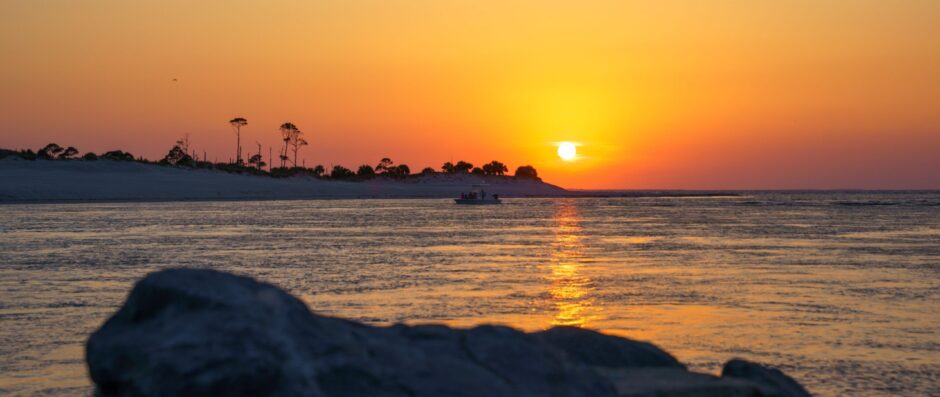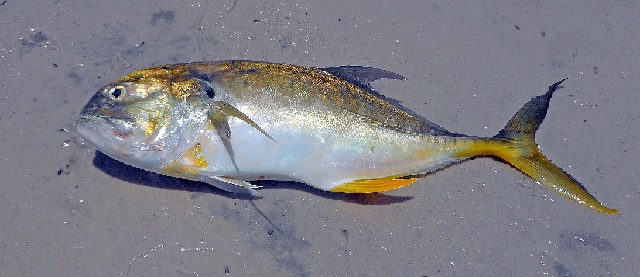Apalachicola provides some of the finest inshore fishing in Florida, especially if you fish here during the summer months when more species of fish are present. You have access to multiple bays, bridges, passes and a river.
Fish the Bays
This area has several bays to fish, although, most anglers will stay in the Apalachicola Bay because the barrier islands give it protection from bigger waves. The fishing is also very good, so many anglers don’t feel the need to go explore some of the other areas to fish here. If you want to fish some of the other bays though, you have some excellent fishing opportunities in several different bays.
Apalachicola Bay
The Apalachicola Bay is home to a variety of fish year round. The barrier islands provide protection from the Gulf’s larger waves, however, there are 2 major passes and a smaller pass that provide awesome fishing spots for so many different fish. Most of the popular fish to target here year round are sheepshead, redfish, sea trout, flounder and black drum. Other fish move into the bay and in the passes during the warmer months of the year.
St. Vincent Sound
The biggest draw to the St. Vincent Sound is Indian Pass. If you want to fish the other areas of the sound, try fishing the many oyster bars here as well as the deeper channel.
Saint George Sound
The St. George Sound is just east of Apalachicola Bay. It offers plenty of good spots to catch fish. Everything that you can catch in Apalachicola Bay and St. Vincent Sound can also be caught here. East Pass is found in this area and it is a very popular fishing spot as well.
Fish the Bridges
St. George Island Bridge
The St. George Island Bridge, also called the Bryant Patton Memorial Bridge, is 4 miles long. It was built in 2002 when the two original bridges were deemed unsafe due to their old age. There are boat launches near the bridge on the south and north ends. Even when there are a lot of boats on the water, you have plenty of space to find a spot to fish around the bridge.
John Gorrie Memorial Bridge
The John Gorrie Bridge is a large bridge that carries US 98 and US 319 over the Apalachicola Bay. It connects Apalachicola, Florida, with Eastpoint, Florida.
There is tons of water to fish here, so if you’re looking to find a spot with your boat, you will have no problems. Anglers report good fishing here during the tidal changes.
Fish the Passes
Indian Pass
Indian Pass is one of the most popular spots to fish in this area, especially when the tarpon migrate into the area. You can catch a lot more than just tarpon here though. Fish the tidal changes and you’ll catch something.
West Pass
West Pass is also a popular spot to fish in the area. You can find a variety of fish here all year long, but the bite is definitely better for a variety of different fish during the warmer months.
Government Cut
Government Cut is a much smaller pass, but some anglers report good fishing here during the tidal changes. Some people fish from the rocks here, but it is definitely a lot easier to fish from a boat. The current can really move in this area during the tidal changes, so be careful.
East Pass
There are deep currents that run through East Pass, which separates St. George Island from Dog Island. It is a possible fishing spot as some anglers fish it from shore and many boats fish this area too.
Fish the Apalachicola River
The Apalachicola River runs from Lake Seminole, on the Florida-Georgia border at Chattahoochee, 106 miles south through the Panhandle to the Gulf of Mexico, at the town of Apalachicola. The best fishing in this river is in the upper river and the lower river.
Upper River
The upper river is quite the drive, so most anglers do not consider fishing this part of the river while here on a vacation. It does offer good fishing for largemouth bass even though few anglers take advantage of it.
Lower River
The lower river consists of the main river channel and the tributaries which form the delta: the St. Marks River, Little St. Marks River, and East River. Striped bass and sunshine bass are stocked in the lower river. Largemouth bass and catfish are here as well. As you get closer to Apalachicola Bay, you will find brackish water, which will hold some freshwater and saltwater species.
Popular Fish Caught Inshore
Below you can find some of the most popular fish that you can catch in the inshore waters of Apalachicola, Florida. There are also pictures and some fishing tips to help you catch more fish on your next visit here.
Black Drum
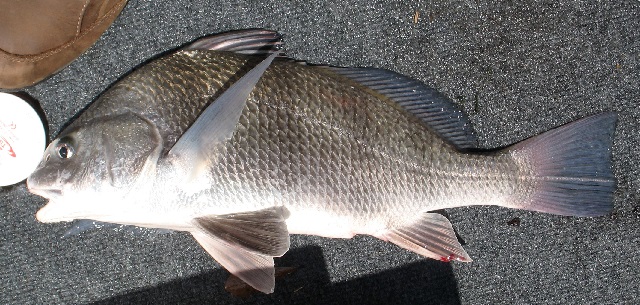
Black drum move into the inshore areas of Apalachicola in large numbers every spring. The river mouths and passes usually provide good numbers of very large drum in the spring. Black drum are available here year round, so inshore anglers do target these fish throughout the year in the bays.
Black Drum Fishing Tips
Spring and fall are popular times to target black drum because they head into the bays and inlets to spawn. They feed on the bottom and some of the best baits are clams and crabs.
Visit our Black Drum fishing page to learn more.
Flounder
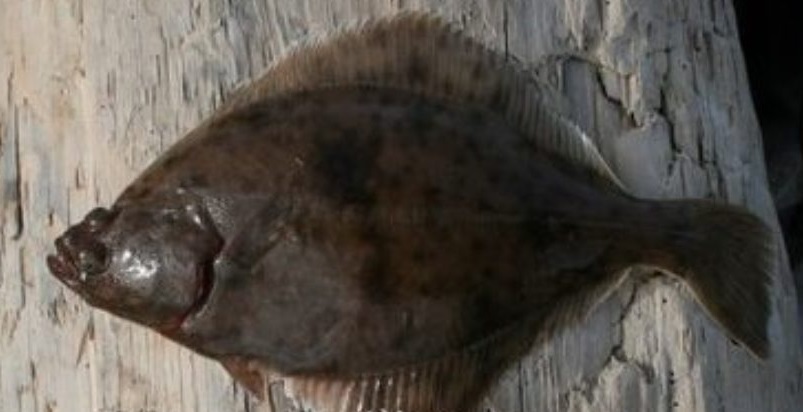
Flounder are available year round in the bays around Apalachicola. For many anglers, they will catch flounder while targeting other species of fish inshore, however, they can be fun to catch and they taste excellent, so they are definitely worth targeting.
Flounder Fishing Tips
Flounder can be caught with artificial lures, however, for many anglers, live bait or natural baits are considered the norm when fishing for flounder. Flounder love hanging tight to the bottom, so pick out your favorite bottom rig and pair it with a bull minnow, finger mullet, pinfish or shrimp and you should catch some fish.
Visit our Flounder fishing page to learn more.
Jack Crevalle
Jack Crevalle are common in the inshore waters of Apalachicola, Florida. The warm weather months will push more fish into this area. They can be super exciting to catch when you find a school of them. Anglers target them with a variety of lures and baits, but topwater lures can be a lot of fun when they are feeding near the surface.
Jack Crevalle Fishing Tips
Jack Crevalle are a very popular species for inshore anglers, although, they are commonly found offshore as well. These fish are extremely powerful and capable of making long runs, especially if you are using light tackle. Their average size ranges from 2 to 5 pounds, but in most areas fish up to 10 pounds are plentiful. Some people eat these fish, but most people would rate them as very poor-tasting.
Learn More About Jack Crevalle
Ladyfish can be a fun fish to catch, especially for younger anglers. They do not get very big, so the more experienced anglers usually see them as bait for bigger fish. Ladyfish are an excellent bait both alive and dead as cut bait. There will be plenty of ladyfish in the bays here during the warmer months of the year.
Ladyfish Fishing Tips
Ladyfish are cousins of the much larger tarpon. They have a long, slender body and are fairly small, averaging 2 to 3 pounds. They are fun to catch for young anglers, but for most adult anglers, ladyfish are used for bait. Ladyfish can easily be caught with a small hook, weight and live shrimp, small bait fish or cut bait.
Visit our Ladyfish fishing page to learn more.
Redfish

Redfish are very common in the bays, creeks and passes of Apalachicola, Florida. You can catch redfish year round here, however, the fall is when anglers have their best shot at a trophy-sized bull redfish. It is one of the most consistent fish to target here, so if you’re fishing inshore waters, plan on running into some redfish.
Redfish Fishing Tips
Anglers target redfish with a variety of artificial lures, live baits and natural baits. While you have so many options for targeting redfish, most anglers will keep it simple and use live shrimp, dead shrimp or lures that mimic a shrimp. You can target the smaller reds with medium heavy rods and reels, but if you are going after bigger redfish, you’re going to want to go with medium heavy to heavy action gear to help land some of these huge fish.
Visit our Redfish fishing page to learn more.
Saltwater Catfish
You will find plenty of catfish in the bays as well as the passes and out along the beaches. They can be annoying if you don’t want to catch them or exciting to provide some action while other fish aren’t biting.
Hardhead Catfish
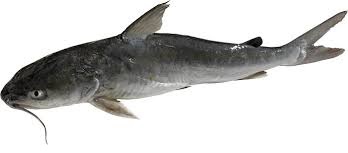
Gafftopsail Catfish
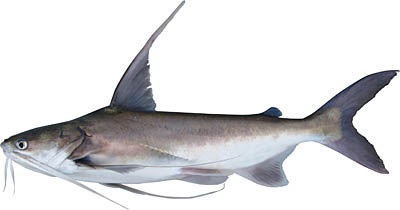
Catfish Fishing Tips
Catching catfish is easy in saltwater. Once you find them, they will easily bite many different types of cut baits. Just get your bait on the bottom, wait for the bite and then set the hook.
Sea Trout
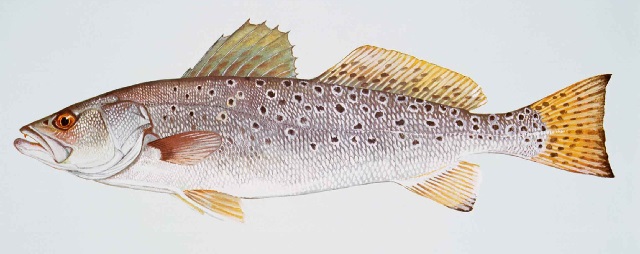
The bays are home to some very good fishing for sea trout and these fish are available year round. Along with redfish, sea trout are a reliable fish to catch here even during the colder times of the year. Fish the grass flats, passes and bridges and you should find some sea trout.
Sea Trout Fishing Tips
Sea trout give anglers lots of options because they can be very aggressive. At times, you can do just as well or even better with artificial lures. For the live bait anglers, you have a variety of live and natural baits that you can use to catch sea trout. Anglers can also get away with using lighter tackle as well since most of the better spots tend to be around shallow water grass flats.
Visit our Sea Trout fishing page to learn more.
Sharks
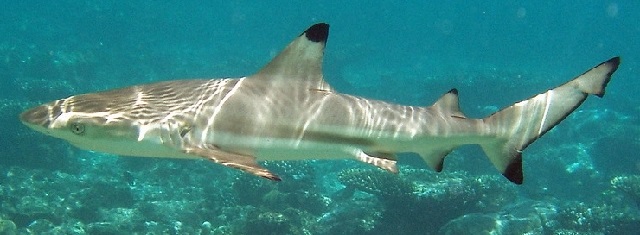
Since most of the deep water structure is 40 to 50 miles out, it is a little bit of a boat ride to target the sharks around the reefs and wrecks. However, this area does get good numbers of sharks closer to shore, so if you want to target them, you can catch some sharks nearshore or even off the beaches and further inshore too.
Learn More About Sharks on our Shark Fishing page.
Sheepshead
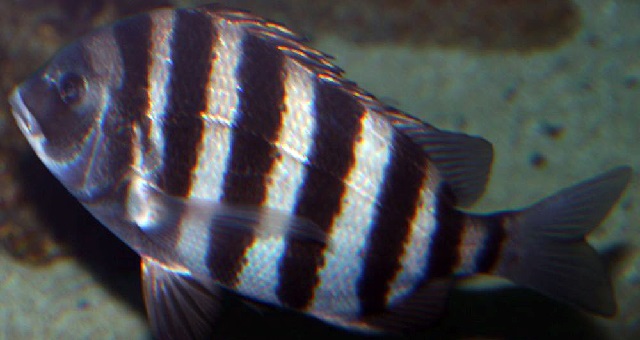
Sheepshead are common in the bays and passes of Apalachicola, Florida. These fish head inshore and feed well throughout the colder months of the year, so they give anglers another species of fish to target when there are less fish around in the winter. Find some rocks, pilings or oyster bars and you should be able to find some sheepshead.
Sheepshead Fishing Tips
Sheepshead are one of the tougher saltwater fish to catch on artificial lures. It can be done, but using live or natural baits can out fish lures by 10 to 1 or more at times. It is easy to understand why most anglers just go with live bait and they don’t even mess with lures when fishing for sheepshead. Shrimp and fiddler crabs are the most popular baits, but don’t rule out a variety of cut baits, oysters and sand fleas. Sheepshead are known for stealing your bait and they also are a tough fish, so make sure you have a strong enough hook and a solid medium-heavy to heavy action fishing rod or you will lose a lot of fish.
Visit our Sheepshead fishing page to learn more.
Mangrove Snapper
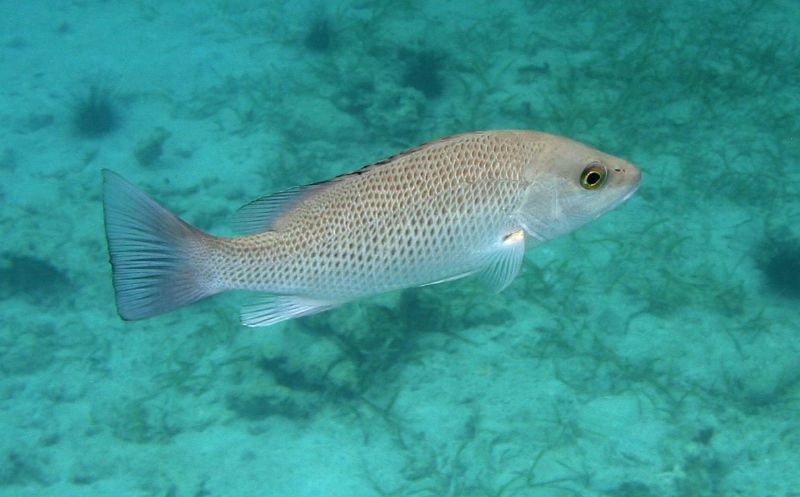
Mangrove Snapper are a popular to fish to target in the inshore waters around Apalachicola, Florida.
Mangrove Snapper Fishing Tips
Mangrove Snapper are one of the most popular snapper to catch because large populations of juvenile fish can be caught inshore where most anglers fish. Offshore, you will find bigger mangrove snapper over the reefs and wrecks. Some of the best baits to use for mangrove snappers are live and dead shrimp, mud minnows, small pinfish, small finger mullet and small crabs.
Tarpon
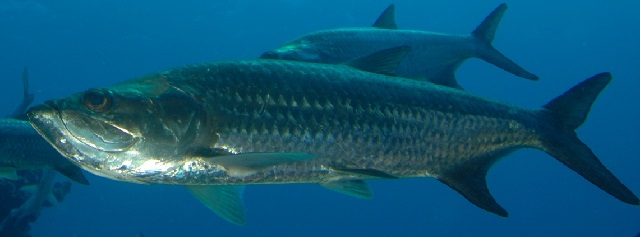
Tarpon migrate into this area from late spring through fall. While the tarpon are here, there will be plenty of anglers that get out here to fish for them. Tarpon can be found roaming the beaches, hanging around the passes and good numbers of them will come into the bays as well.
Tarpon Fishing Tips
While many anglers may run into smaller tarpon and catch them without much effort, to consistently target bigger tarpon, you need to make sure you have the right tackle & equipment so things go your way. Tarpon will eat a variety of baits, so you have a lot of options when it comes to live & cut baits or artificial lures. The time of year is very important as well since tarpon will migrate a long way up and down both the Gulf & Atlantic Coasts each year.
Visit our Tarpon fishing page to learn more.
